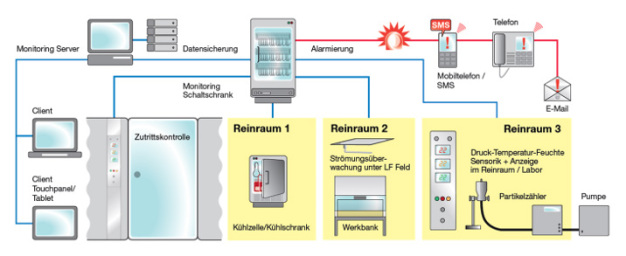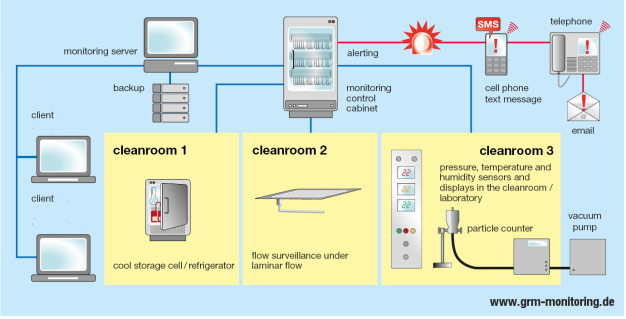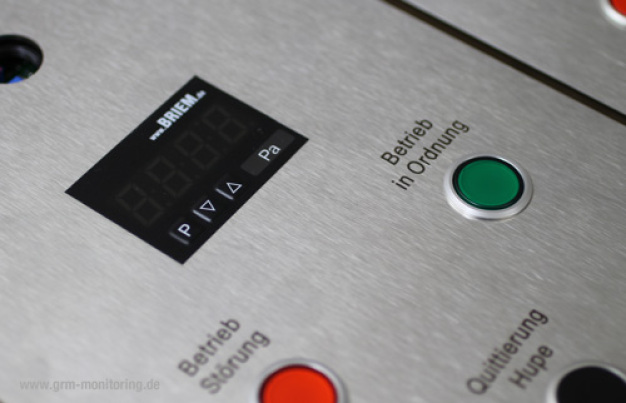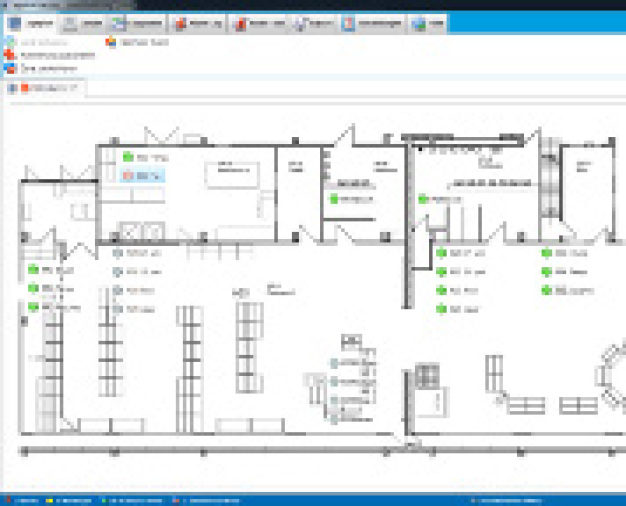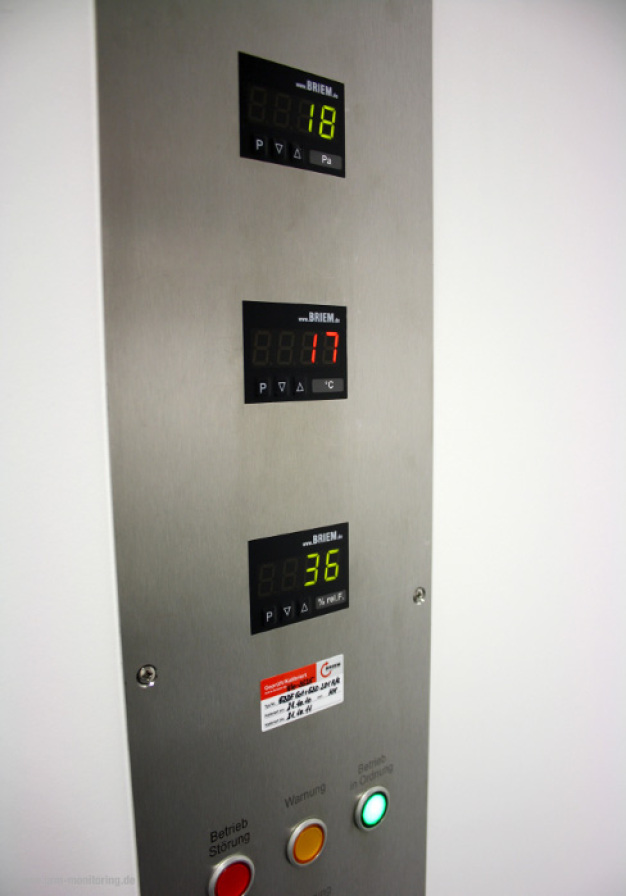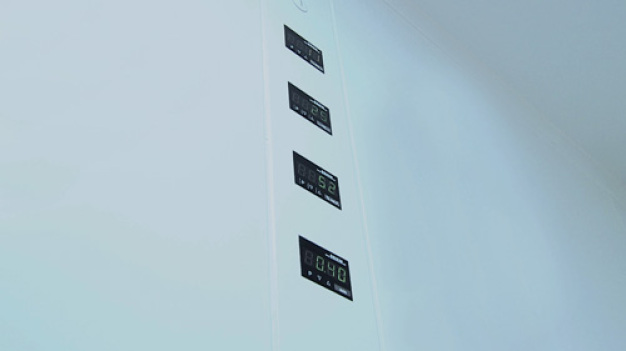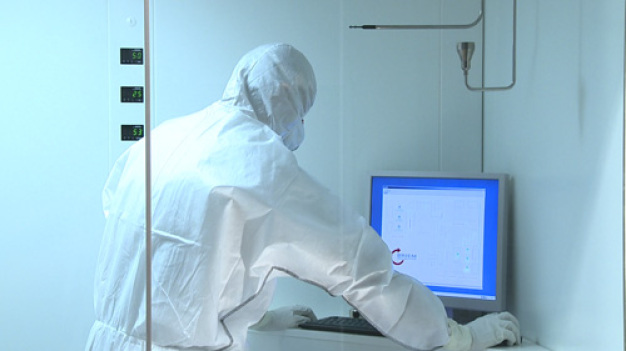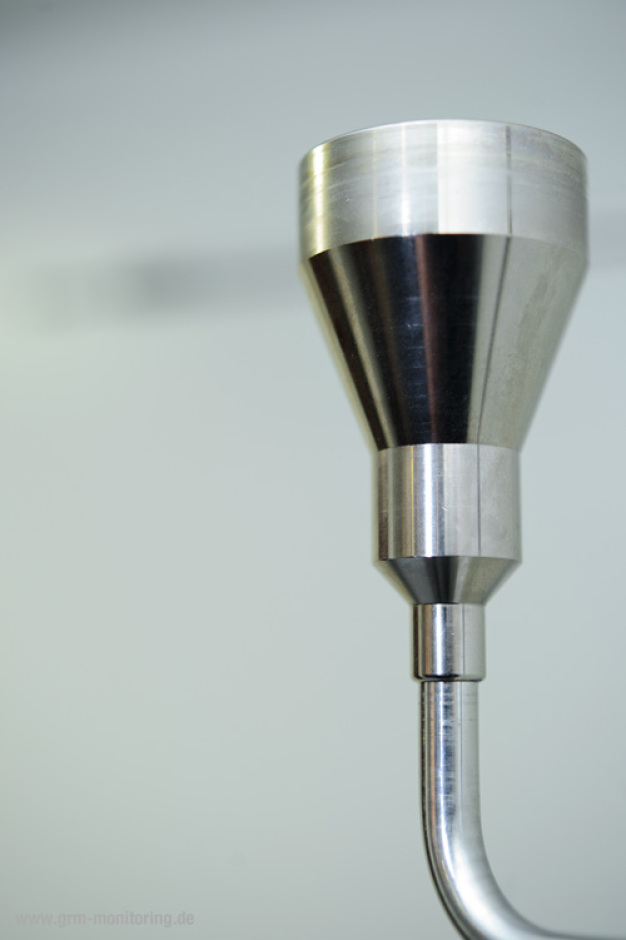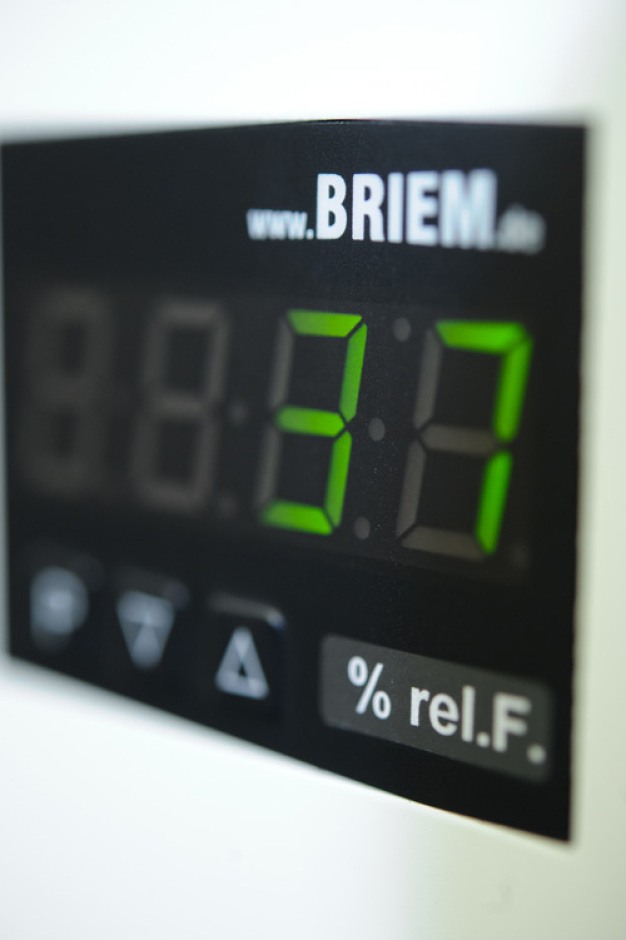- Planning
Matthias Alber
Clean Room Monitoring
What to consider when you‘re monitoring clean rooms
For GMP (Good Manufacturing Practice) and GAMP (Good Automated Manufacturing Practice) compliant products there are more and more strict rules and regulations. The compliance with these rules and regulations has to be observed as a part of the company’s quality management system.
For this purpose a customized clean room monitoring system is a very helpful instrument. Ideally, the monitoring system documents the critical environmental and production parameters automatically, continuously and completely - without further effort.
The system allows the user to intervene if parameters differ from the desired value and records the actual parameters so that they are verifiable in the long-term.
To make the monitoring system a useful tool, the facility’s life cycle must be taken in consideration from the beginning of the planning.
This is the only way to make sure that the system does not unnecessarily impede production procedures and instead supports the user in their day-to-day work and spares them the extra effort of complex documentation duties.
The planning should not start from a technical point of view because almost everything is feasible going from there. Much more important is that the system fulfills any product and user-specific requirements and conforms to the respective rules and regulations.
Therefore the following questions must be answered as part of the planning process:
- Which rules and regulations have to be observed? At this one has to consider the product-specific requirements and approval procedures as well as any statutory requirements regarding the monitoring system.
- Which tasks and possible problems might come up in the future? Key words: system extension, maintenance requirements, adjustable equipment, qualified status
- In which areas does it make sense to just monitor specific parameters and in which areas do we need a holistic monitoring system to monitor and record all relevant parameters continuously?
- How does the system have to be configured to optimally support the user?
Statutory provisions are an important factor from planning to production. To acquire the necessary manufacturing permit the requirements of GMP, GAMP and FDA must be met. The demands in regards to the monitoring system are a direct result of this.
At the beginning there’s the URS
The first step is drawing up the URS (user requirements specification). Three factors should be considered to define the basic requirements:
- Production process for the respective product (clean room class, safety aspects, storage)
- Risk factors concerning the product (sensitivity to temperature / humidity changes)
- Requirements regarding the monitoring system
Customer-specific wishes and demands should also be taken into account, e.g.:
- Material: flush mounted, stainless steel measuring instruments (key word: hygienic design).
- Quality of measuring equipment: What’s the permissible allowance for sensors? Do we have refrigerators or climate cabinets for which we need high-precision measuring instruments due to the very low permissible tolerance?
- Design: Where should the displays and alarm indicators be located in the clean room to effectively inform the personnel during the production process?
Employees who will be working with the system on a daily basis should definitely be included in the planning.
After defining the requirements the system supplier will issue the FSD (functional specification document) to specify how the user requirements will be put into practice.
The user should review the FSD and adjust it if necessary. Then the production in the supplier’s facility can begin. The FAT (Factory Acceptance Test) should also take place there. For the FAT the complete system has to be assembled and tested to allow the customer to assure themselves of the system’s functionality and quality before the components are installed in their own facility.
User training during operation
After the successful FAT the next step is the installation of the components at the customer’s facility and after that the commissioning of the system including the IQ (installation qualification), OQ (operational qualification) and GMP compliant documentation on site. An important point is the user training which should take place after the commissioning when the system is fully functional to ensure that the users learn to work with their customized version of the system.
As soon as the commissioning and qualification is complete the system can be used in the production process. The life cycle according to GMP however continues. The monitoring system has to be maintained and the sensors must be re-calibrated in regular, predetermined intervals (usually every 12 months).
Therefore it is important to ensure from the beginning that the system can be maintained in built-in conditions. Especially the sensors have to be calibrated including the complete measuring chain and if necessary adjusted. The maintenance must be completed according to the maintenance plan and the process has to be documented accordingly.
Should the necessity for system extensions or amendments arise during operation these changes must be implemented in compliance with predetermined standards (change control) and must be documented accordingly. This may become necessary if the monitoring system has to be extended by adding incubators or climate cabinets or measuring instruments with different limit values. In these cases the amendments have to be planned, implemented and documented in compliance with GMP guidelines to ensure the continued qualified status of the system.
An ideal clean room monitoring system offers:
- holistic project management from planning to maintenance
- investment safety due to modular system structure with possible extensions and amendments (e.g. adding refrigerators)
- multistate alarm and warning concept with several escalation levels
- audit safety due to complete GMP documentation
- short training period due to an intuitive operating concept for devices and software
- optimized life-cycle-costing (LCC) consideration - including acquisition cost, availability, maintenance, support and possible extensions

BRIEM Steuerungstechnik GmbH
Lauterstraße 23
72622 Nürtingen
Germany
Phone: +49 7022 60920
Fax: +49 7022 609260
email: info@briem.de
Internet: http://www.briem.de





